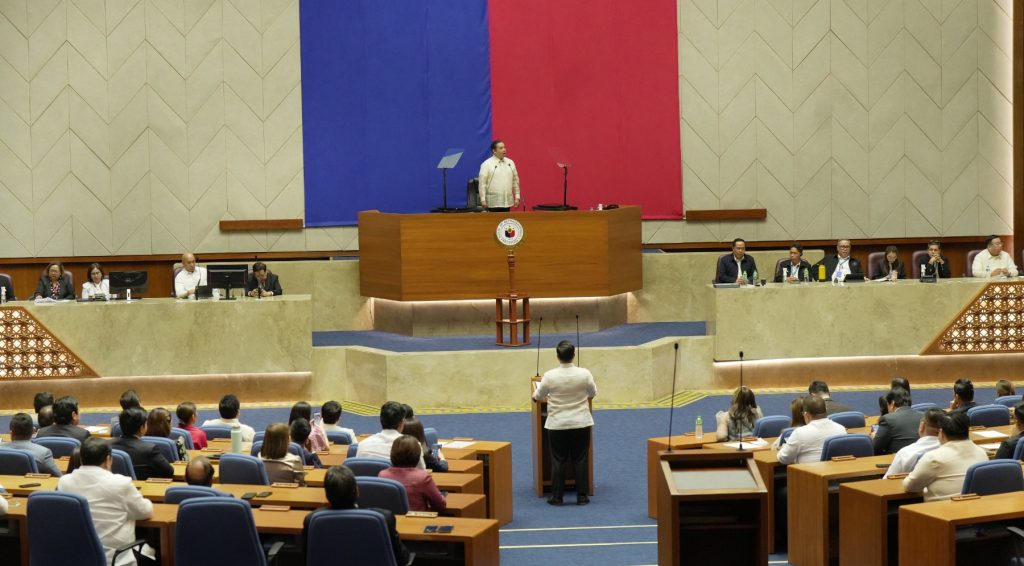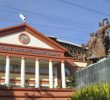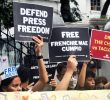
DAVAO CITY, Philippines – Moves to amend the 1987 Constitution have always occurred in every presidency, with many names from charter change or cha-cha, con-ass to pirma.
Currently, a signature campaign is circulating nationwide petitioning for constitutional change. But this has been called out by citizens, various members of the House Representatives, and Bayan Muna Party-list as people were allegedly given money to sign this petition.
The People’s Initiative for Reform, Modernization and Action (PIRMA) has claimed this is their independent initiative. But their campaign comes weeks after the House of Representatives announced last December of initiatives to amend the charter without involving its counterpart, the Philippine Senate.
Let’s take a look at how the 1987 Constitution can be amended, and how past attempts to call for amendments have failed.
Three ways to change
The 1987 Constitution was crafted a year after People Power in 1986 through a constitutional convention, which established the presidential form of government with a bicameral congress (House and Senate) which we have now.
The framers of this constitution considered there could be possible amendments to the charter, and in order to safeguard that the moves are democratic, defined three ways to amend or revise the constitution.
One is the constituent assembly, or con-ass, where Congress convenes to amend the charter.
There is the constitutional convention where delegates are elected at the district level.
The third method, the people’s initiative is designed so that Filipino citizens can push for changes in the constitution, which embodies the “power of the people” principle.
The Republic Act 6734 or The Initiative and Referendum Act defined the process of people’s initiative.
This law says that the public can propose amendments through a petition signed by at least 12 percent of total registered voters nationwide and that each legislative district must gather at least 3 percent of its registered voters. There were over 65 million voters during the last 2022 elections, so a current people’s initiative must garner at least 7.8 million signatures.
When the initiative reaches the required number of signatories, the petition must be published twice in newspapers of nationwide circulation, after which a nationwide referendum will be set by Comelec to decide if they approve of the proposal.
This process is long and costly and also needs to be verified by Comelec that the signatories are registered voters.
How past PI’s failed
There have been two people’s initiatives that happened in history.
PIRMA was the first group to make such an attempt in 1997, during the final year of Fidel Ramos’ presidency. It was led by Philippine Charity Sweepstakes Office (PCSO) Chairman Tomas Morato, journalist Carmen Navarro Pedrosa, and her husband, former Ambassador Alberto Pedrosa.
They were pushing for a change to a parliamentary system from the presidential system set by the 1987 charter. The group claimed they had gathered 11 million votes nationwide.
But in March 1997, the Supreme Court voted 14-0 voiding the PIRMA petition, saying there was no enabling law on the people’s initiative.
The PIRMA initiative was also greeted with protests nationwide.
The second people’s initiative was made in 2006 by a group led by Raul Lambino, which also proposed a shift to a parliamentary form of government.
The group claimed they had gathered over 6.3 million signatures, but in their petition to the Supreme Court, they narrowly lost by one vote, 8-7.
The SC found that the draft proposals for amendments were prepared before the signing of the petition, and did not signify that this is an initiative involving the people.
Concord, Con-ass, etc.
During the presidency of Joseph Estrada (1998 – 2001), he launched the Constitutional Correction for Development (Concord) which proposed the lifting of restrictions on foreign ownership of businesses. This was discontinued after getting wide opposition.
There were several attempts to call for a con-ass during the presidency of Gloria Macapagal-Arroyo (2001-2010) which was led by House Speakers Jose de Venecia and Prospero Nograles Jr. But this failed to garner support and was again widely criticized, especially with controversies surrounding the president.
President Benigno Aquino Jr did not fully support moves by his allies for cha-cha.
President Rodrigo Duterte (2016-2022) also attempted to change the constitution in 2017, as he wanted to fulfill his campaign promise to movements who wanted a federal form of government. He had convened a constitutional commission that invited former Supreme Court Chief Justice Reynato Puno to draft amendments.
The House proposed to convene a con-ass to push the amendment, but there was disagreement with the Senate on whether they should vote jointly or separately. The move fizzled out.
Romualdez’ cha-cha
The current moves for charter change in the House reportedly wanted to adjust the term limits of Congress and the presidency, and also to lift restrictions on regulating foreign investments.
Whether it’s called cha-cha, con-ass, people’s initiative, or pirma, the question remains is the hows and more importantly, the why’s.
The late journalist Luis Tedoro pointed out a long time ago why there is resistance from people to dance the cha-cha:
“Under existing conditions, constitutional amendments would result in everyone’s — the politicians first and those foreign interests eager to get their claws on this country’s resources second — except the Filipino people’s getting their fondest wishes.” (davaotoday.com)
1987 constitution, cha-cha, charter change, philippines, supreme court









